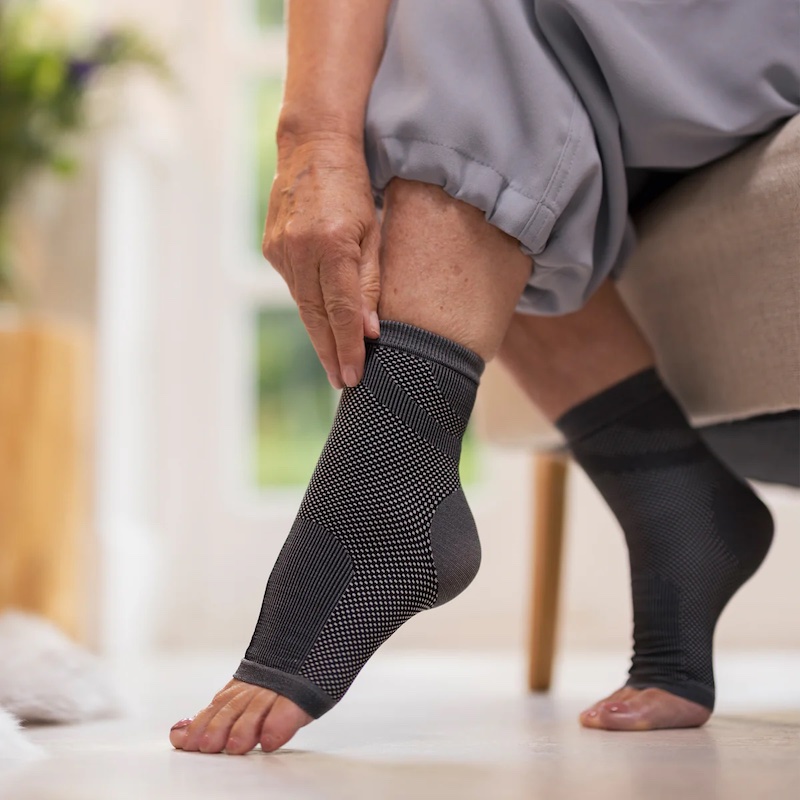
Date: 06 May 2025
Understanding Varicose Veins
Varicose veins are swollen, twisted veins that appear just under the skin, primarily in the legs. They result from weakened valves and veins in your legs. When these valves don't function properly, blood can collect in your legs, leading to vein enlargement. Symptoms include aching pain, heaviness, and visible bulging veins. Factors like prolonged standing, obesity, pregnancy, and age can increase the risk.
Common Causes of Varicose Veins
Several factors can increase the risk of developing varicose veins:
- Genetics – Family history plays a significant role.
- Age – Vein elasticity and valve strength decline over time.
- Pregnancy – Increased blood volume and hormonal changes can stress veins.
- Prolonged Standing or Sitting – Increases pressure in the leg veins.
- Obesity – Adds extra pressure on the circulatory system.
- Hormonal Changes – Common in women due to menstruation, pregnancy, or menopause.
Common Symptoms
- Aching or heaviness in the legs
- Swelling around the ankles or lower legs
- Burning, throbbing, or cramping sensations
- Itching around the vein
- Skin discoloration or ulcers in severe cases
The Role of Compression Socks in Managing Varicose Veins

Compression socks are specially designed hosiery that apply gentle pressure to your legs and ankles. This pressure helps:
- Improve Blood Flow: By squeezing the legs, these socks aid veins and leg muscles in moving blood more efficiently.
- Reduce Swelling: They prevent fluid from pooling in the legs, reducing swelling and discomfort.
- Alleviate Pain: Regular use can decrease the aching and heaviness associated with varicose veins.
Studies have shown that graduated compression stockings can effectively manage symptoms of chronic venous insufficiency and prevent the progression of varicose veins.
Benefits of Using Compression Socks
- Enhanced Circulation: They promote better blood flow, reducing the risk of blood clots.
- Symptom Relief: Regular wear can alleviate pain, swelling, and the feeling of heaviness in the legs.
- Prevention: They can prevent the development of new varicose veins, especially in individuals at risk.
- Post-Surgical Support: After varicose vein surgery, compression socks can aid in recovery and prevent complications.
Choosing the Right Compression Socks
When selecting compression socks:
- Compression Level: Measured in mmHg, common levels include:
- 15-20 mmHg: Mild compression for daily wear.
- 20-30 mmHg: Moderate compression for varicose veins and mild edema.
- 30-40 mmHg: Firm compression for severe varicose veins and post-surgical recovery.
- Length: Options include knee-high, thigh-high, and full-length stockings.
- Material: Look for breathable, moisture-wicking fabrics for comfort.
- Fit: Ensure they are snug but not too tight. Proper sizing is crucial for effectiveness and comfort.
Top Compression Socks Available in Kenya
Here are some recommended compression socks available at Pharmily, Kenya’s trusted online pharmacy:
- Scholl Flight Socks
Scholl Flight Socks are specially designed to reduce the risk of DVT and leg swelling during flights and long periods of inactivity. These medically tested compression socks apply gentle pressure to boost blood circulation, helping to prevent discomfort and swelling in the legs.
Note: Please consult with a healthcare professional to determine the appropriate compression level for your condition.
Tips for Using Compression Socks
- Wear Them Daily: Put them on in the morning before swelling starts.
- Proper Care: Wash them regularly to maintain elasticity.
- Replace Periodically: Over time, the compression level may decrease. Replace them every 3-6 months.
- Monitor Skin: Check for any skin changes or irritation. If you notice any issues, consult a healthcare provider.
FAQs
1. How do compression socks help with varicose veins?
Compression socks gently squeeze the legs, helping blood move more efficiently toward the heart. This reduces pooling of blood in the veins, minimizes swelling, and relieves the discomfort often associated with varicose veins.
2. What level of compression do I need for varicose veins?
For mild to moderate varicose veins, 15-20 mmHg or 20-30 mmHg is usually sufficient. Severe cases or post-surgical recovery may require 30-40 mmHg. Always consult your doctor or pharmacist to determine the ideal compression level for your needs.
3. Can I wear compression socks all day?
Yes, most people wear them throughout the day and remove them at night before bed. They’re most effective when worn from morning to evening, especially before swelling begins.
4. Are there any side effects of wearing compression socks?
When properly fitted, compression socks are safe. However, if they’re too tight, they may cause numbness, tingling, or skin irritation. Always follow sizing guides and consult a healthcare professional for the best fit.



